Fourth Time's The Charm For Private Company
ANN REALTIME UPDATE 09.28.08 1920 EDT: It's all
smiles for the gang at SpaceX. Falcon 1 has made history as the
first privately-developed liquid fueled launch vehicle to achieve
earth orbit... with the company's fourth Falcon I rocket performing
flawlessly in a 10-minute ride to the heavens.
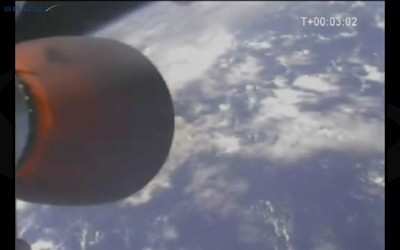
"And that would be a nominal SECO!" said launch commentator Max
Vozoff upon second-stage engine shutdown. "This is a very good day
at SpaceX."
At T-plus 10 minutes, Falcon I succesfully released its dummy
payload... marking a wholly successful mission for the company,
which has suffered through the failures of its first three
launches.
Perhaps the first four words of the congratulatory
speech given to SpaceX employees by company founder and Chief
Technology Officer Elon Musk say it best...
"That was freakin' awesome!"
Original Report
1855 EDT: Can SpaceX finally record a
completely successful launch, and achieve orbit? We'll soon see, as
the fledgling launch services company prepares to launch its fourth
Falcon I rocket just minutes from now.
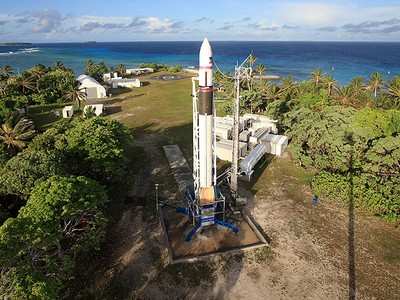
SpaceX officials state launch time is scheduled for 1915 EDT
from the company's Falcon 1 launch site at the Kwajalein Atoll,
about 2500 miles southwest of Hawaii. Falcon 1 launch facilities
are situated on Omelek Island, part of the Reagan Test Site (RTS)
at United States Army Kwajalein Atoll (USAKA) in the Central
Pacific.
As of 1850 EDT, the rocket's first stage is 95% full of liquid
oxygen (LOX) and completely full of RP-1 fuel. The LOX topping
procedure has begun, with the second stage 97% full of LOX, and
100% full of RP-1.
 Sunday's
scheduled launch is by far the quickest turnaround between launches
that SpaceX has managed to date. As ANN reported, SpaceX last
tried for the heavens in early August; though things looked good to
start, the launch went awry when the rocket's second stage failed
to fully separate... a problem SpaceX founder Elon Musk says has
been solved.
Sunday's
scheduled launch is by far the quickest turnaround between launches
that SpaceX has managed to date. As ANN reported, SpaceX last
tried for the heavens in early August; though things looked good to
start, the launch went awry when the rocket's second stage failed
to fully separate... a problem SpaceX founder Elon Musk says has
been solved.
Though SpaceX's first three missions each carried experimental
scientific payloads, this launch will carry a 364-lb "mass
simulator" -- a fancy name for a dummy payload.
SpaceX Launch History
After three scrubbed attempts, SpaceX made its first launch of
its Falcon I rocket on March 24, 2006. It looked good to start...
but the launch vehicle was destroyed moments after it ascended from
its launch pad on Kwajalein Atoll, in the Marshall Islands.
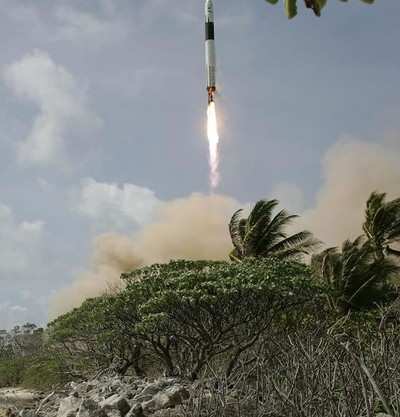
According to a statement from SpaceX, "at T+25s, a fuel leak of
currently unknown origin caused a fire around the top of the main
engine that cut into the first stage helium pneumatic system.
On high resolution imagery, the fire is clearly visible within
seconds after liftoff. Once the pneumatic pressure decayed
below a critical value, the spring return safety function of the
pre-valves forced them closed, shutting down the main engine at
T+29s."
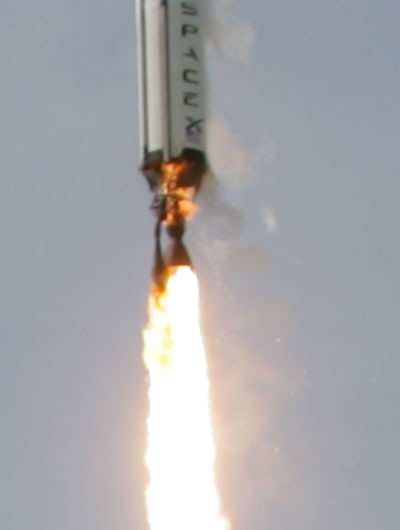
The second flight of the SpaceX Falcon I was launched on March
20, 2007 after two scrubbed tries. Company founder Elon Musk told
reporters the Falcon I successfully reached space, "and retired
almost all the risk associated with the rocket."
Indeed, all went well through stage two separation and rocket
ignition... but problems arose with roll control in the later
portion of the second stage burn. A progressive oscillation was
apparent in the video feed from the second stage, and the rocket
appeared to roll just as contact was lost.
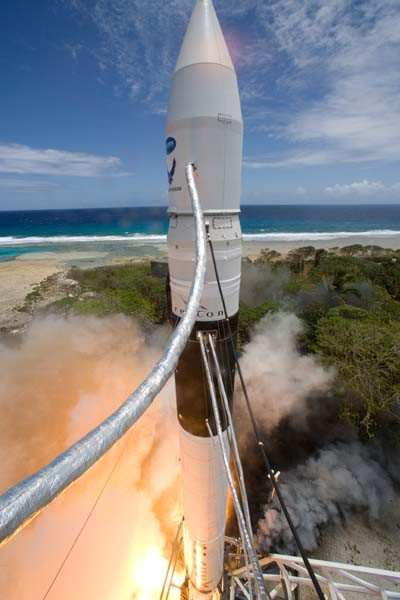
SpaceX took a 16-month hiatus in scheduling the company's third
mission of the Falcon I, which took place on August 3, 2008.
After having an earlier launch attempt abort at the last
possible moment -- at T-minus .05 seconds -- the company's second
launch attempt from Kwajalein Atoll in the South Pacific appeared
to be near-perfect to start... but problems soon arose after the
Falcon 1's two stages failed to separate, and the rocket was
destroyed.
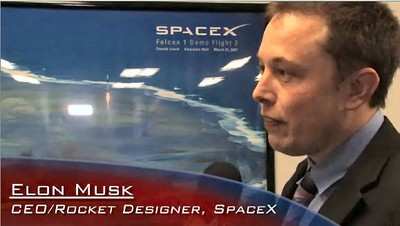
"It was obviously a big disappointment not to reach orbit on
this flight," said Musk. "On the plus side, the flight of our first
stage, with the new Merlin 1C engine that will be used in Falcon 9,
was picture perfect. Unfortunately, a problem occurred with stage
separation, causing the stages to be held together.
In addition to the rocket, three satellites carried onboard the
Falcon 1 -- for the Department of Defense, the Malaysian
Government, and NASA -- were also destroyed. Despite the setback,
however, the charismatic founder of SpaceX remained undeterred.
"The most important message I'd like to send right now is that
SpaceX will not skip a beat in execution going forward," Musk said
in August.
 NTSB Final Report: Cessna 177B
NTSB Final Report: Cessna 177B ANN's Daily Aero-Term (05.08.25): Final Approach Fix
ANN's Daily Aero-Term (05.08.25): Final Approach Fix Aero-News: Quote of the Day (05.08.25)
Aero-News: Quote of the Day (05.08.25) ANN's Daily Aero-Term (05.09.25): Estimated (EST)
ANN's Daily Aero-Term (05.09.25): Estimated (EST) ANN's Daily Aero-Linx (05.09.25)
ANN's Daily Aero-Linx (05.09.25)









